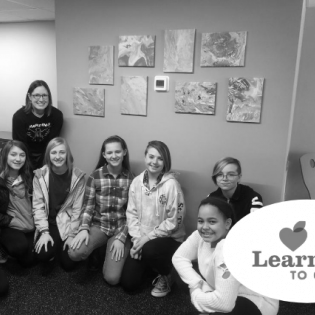Promoting the Common Good
This lesson emphasizes the importance of voluntary action for the common good based upon student understanding of one's rights and the corresponding responsibility to protect them.
The learner will:
- demonstrate how the guaranteed rights in the Bill of Rights promote the common good.
- discuss an issue affecting the common good in the classroom or school and demonstrate respect and courtesy for differing opinions.
- identify the relationship between individual rights and community responsibilities.
- Posterboard
- Craft materials for décor (chenille stems, puffy paint, felt, etc.)
- Markers, colored pencils, crayons and poster paints
- Scissors, glue, and tape
- Magazines for picture cutout
We the People. Calabasas, CA: Center for Civic Education, 1988.
Instructions
Anticipatory Set:
Discuss: “What are some things that you and your family need to be successful and to thrive?” Allow learners to share and support their ideas.
Explain that in the last lesson, the group discussed what responsibilities we have to protect our rights. In this lesson, we will examine the responsibility they may have to promote the common good.
Define common good as what is good for everyone in the group (community, class, country, etc.), not just a few people
Elicit from learners things that are good for everyone involved. Refer to answers from the Anticipatory set, and add additional items.
- Everyone needs a place to live safely.
- Everyone needs food and medical care.
- Everyone needs to have the opportunity to go to school and get a job.
Now describe situations in which it is difficult to reach a decision that is best for everyone involved. Start with an example from home, then one from school, and finally, one in the larger community. (The leader may wish to conduct this step of the instructional procedure in debate format). Ask learners to explain why it is challenging to make the decisions.
- Home decision—Should our family move to a new location?
- School decision—Should students be able to dress as they wish, without the need for a dress code?
- Community decision—Should a mall be built in a given area? Consider the pros and cons from each perspective involved (investors, citizens, animals, environment, etc.).
Emphasize the ease or difficulty we may experience when trying to promote the common good of all (as discovered in the above discussion/debate). Ask, "What happens if we do not put the well-being of all people first?" and "What can we do to fulfill our responsibilities so that the rights and well-being of all people are protected?"
Create small groups of learners. Assign one of the five basic guaranteed rights to each group. Have each group design and create a poster to illustrate three ways in which fulfilling responsibilities of the group’s assigned right ensures the well-being of all people, with the focus on ALL.
The poster should include the name of the right, clearly illustrate the three ways the right ensures the well-being of all people, and should be of quality workmanship for display.
Philanthropy Framework
-
Strand PHIL.III Philanthropy and the Individual
-
Standard PI 01. Reasons for Individual Philanthropy
-
Benchmark MS.5 Describe the responsibility students have to act in the civil society sector to improve the common good.
-
-
